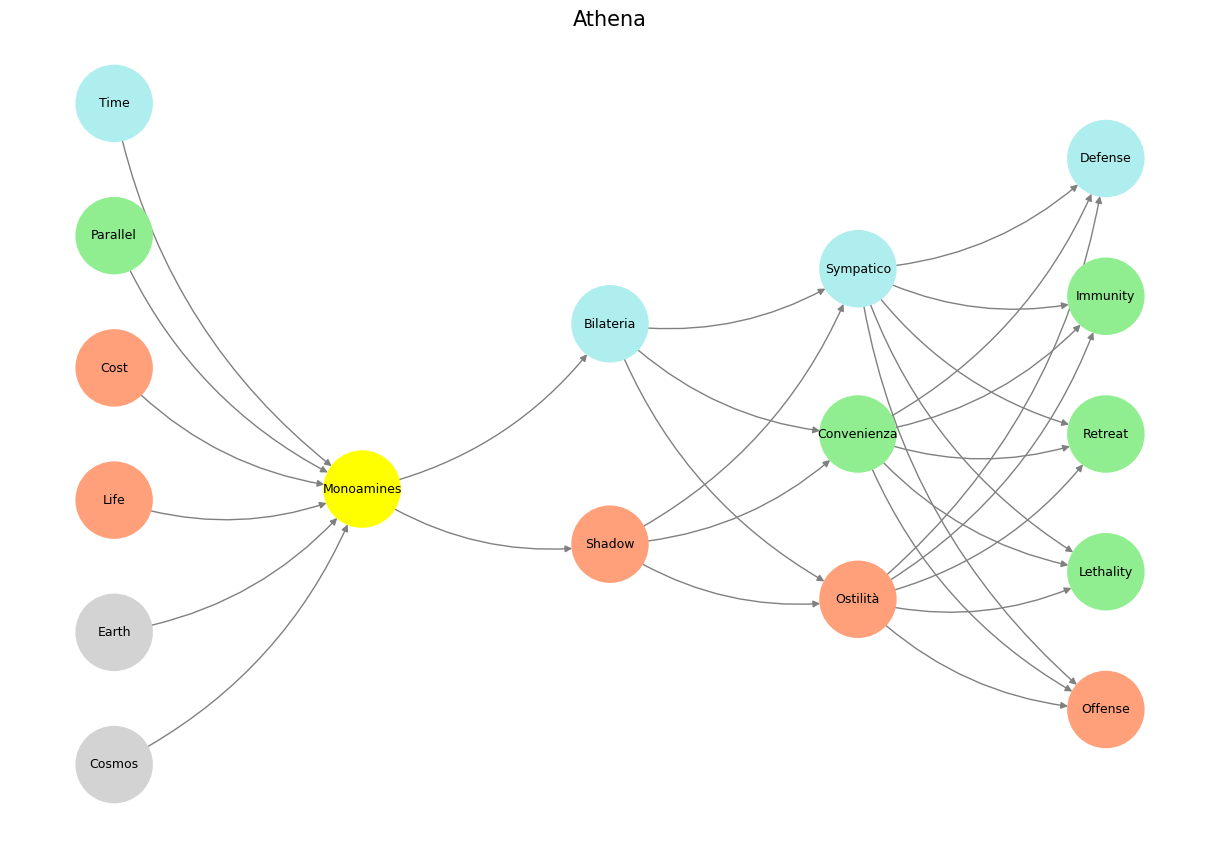Orient#
Following the Wabbit: Mars, Earth, and the Psychology of Escape#
The public discourse surrounding humanity’s ambition to colonize Mars often reads like a psychological drama. At its heart, it juxtaposes two competing modes of existence: introspection versus escapism. To “figure out how to live on Earth” is to delve into the geological layers of our collective psyche—a patient, introspective psychology. By contrast, “going to Mars” can be seen as a way to keep busy, a grand distraction that avoids confronting our inner demons. These dynamics play out in the YouTube comments, with their mix of awe, skepticism, and sardonic humor, reflecting the unresolved tension between inner excavation and outward ambition.
The Rabbit Hole: Mars as Combinatorial Escape#
Fig. 34 The Wabbit? Let’s think of the rabbit hole as a massive combinatorial search space. Is it cooperative, iterative, or adversarial? Let’s clarify one thing: “Kill the Wabbit” is outright adversarial. So our discussion is about “Following the Wabbit!”#
If Earth is a metaphorical Wabbit Hole—a massive combinatorial search space of problems, emotions, and existential truths—then following the Wabbit represents humanity’s attempt to make sense of its complexities. This search can take many forms: cooperative, iterative, or adversarial. The cooperative approach, embodied in collaborative climate action and social progress, seeks to harmonize human existence with the planet’s limits. Iterative efforts, like technological innovation or social reform, involve trial and error—incrementally improving life without fundamentally shifting its trajectory.
Yet the adversarial dynamic looms large in our current moment. In the words of Elmer Fudd, “Kill the Wabbit” encapsulates humanity’s tendency to dominate and exploit rather than understand. The drive to conquer Mars reflects this adversarial impulse, framing the Red Planet as a blank slate, a frontier to tame rather than a challenge to reflect upon.
Earth: Introspective Psychology as Geology#
The call to “figure out how to live on Earth” resonates with those who see humanity’s struggles as geological in nature, requiring careful excavation of the layers beneath our societal surface. One commenter succinctly captures this sentiment: “We humans still don’t know how to live on planet Earth. What will we do on Mars?” This perspective views Mars not as an escape but as a distraction from the real work of self-understanding. The comment “Daydreaming of Mars, sleepwalking the Earth 😅” echoes this critique, likening the Martian dream to a fugue state—busy and ambitious, yet detached from reality.
Geology, as a metaphor for introspective psychology, demands patience and depth. It involves facing the tectonic shifts of climate change, the sedimented inequalities of society, and the fossilized remnants of our historical mistakes. These challenges cannot be solved by rocketing off to another planet. Instead, they require us to sit with discomfort, confront our inner demons, and reimagine our relationship with the Earth.
Mars: Keeping Busy to Avoid the Inner Wabbit#
In contrast, the dream of Mars represents a restless avoidance of these psychological depths. It is easier to chase a dazzling frontier than to wrestle with the sedimentary layers of one’s own existence. Comments like “It’s massive, and I’m glad to have been alive to see it” and “Mission to Mars 💪😎” reflect the allure of escape, casting the Martian endeavor as a heroic distraction. Yet others critique this tendency, with remarks like “Sensible spending and going to Mars with taxpayer money 😅” or “What about free breakfast and lunches for school kids?” These voices remind us that the hustle to leave Earth often ignores the unfinished business we leave behind.
The YouTube commentary also reveals the absurdities of this escapism. Lines like “Just imagine how would an interplanetary war between narcissists look like” and “We are going to Mars.., you know Musk doesn’t mean YOU, right? 😂” highlight the exclusivity and ego underlying the Martian dream. In this light, Mars becomes less a beacon of hope and more a playground for the privileged—a space to project ambitions without confronting accountability.
Following the Wabbit: Cooperative, Iterative, or Adversarial?#
The question of whether Mars is a cooperative, iterative, or adversarial pursuit is central to understanding its psychological significance. If viewed cooperatively, Mars could be a unifying endeavor, fostering collaboration across nations and disciplines. Iteratively, it might serve as a testing ground for technologies that could benefit Earth. But the dominant narrative appears adversarial: a race to conquer the frontier, driven by competition, ego, and the desire to “kill the Wabbit” rather than follow it.
Yet, as one commenter observes, “History is repeating 🫢🍿.” Humanity’s past is littered with examples of adversarial pursuits—conquests that ultimately left the deeper questions unanswered. To follow the Wabbit into the combinatorial depths of introspection would mean reimagining Mars not as an escape but as a reflection. It would require using the journey to illuminate our struggles on Earth, rather than running from them.
The Wabbit’s Lesson: Rebalancing Escape and Reflection#
In the end, the drama of Mars versus Earth is not just about space exploration—it is about the human condition. The Martian dream challenges us to reconcile our desire for escape with the need for introspection. Can we harness the ambition of Mars for cooperative and iterative growth, or will we succumb to the adversarial impulse to flee our inner demons?
As one commenter quips, “Living in a fool’s paradise.” Perhaps the Wabbit’s greatest lesson is this: the escape we seek in Mars can only be meaningful if it leads us back to Earth—stronger, wiser, and ready to confront the layers we once ignored.
Show code cell source
import numpy as np
import matplotlib.pyplot as plt
import networkx as nx
# Define the neural network structure
def define_layers():
return {
'World': ['Cosmos', 'Earth', 'Life', 'Cost', 'Parallel', 'Time', ],
'Perception': ['Monoamines'],
'Agency': ['Shadow', 'Bilateria'],
'Generativity': ['Ostilità', 'Convenienza', 'Sympatico'],
'Physicality': ['Offense', 'Lethality', 'Retreat', 'Immunity', 'Defense']
}
# Assign colors to nodes
def assign_colors():
color_map = {
'yellow': ['Monoamines'],
'paleturquoise': ['Time', 'Bilateria', 'Sympatico', 'Defense'],
'lightgreen': ['Parallel', 'Convenienza', 'Immunity', 'Retreat', 'Lethality'],
'lightsalmon': [
'Cost', 'Life', 'Shadow',
'Ostilità', 'Offense'
],
}
return {node: color for color, nodes in color_map.items() for node in nodes}
# Calculate positions for nodes
def calculate_positions(layer, x_offset):
y_positions = np.linspace(-len(layer) / 2, len(layer) / 2, len(layer))
return [(x_offset, y) for y in y_positions]
# Create and visualize the neural network graph
def visualize_nn():
layers = define_layers()
colors = assign_colors()
G = nx.DiGraph()
pos = {}
node_colors = []
# Add nodes and assign positions
for i, (layer_name, nodes) in enumerate(layers.items()):
positions = calculate_positions(nodes, x_offset=i * 2)
for node, position in zip(nodes, positions):
G.add_node(node, layer=layer_name)
pos[node] = position
node_colors.append(colors.get(node, 'lightgray')) # Default color fallback
# Add edges (automated for consecutive layers)
layer_names = list(layers.keys())
for i in range(len(layer_names) - 1):
source_layer, target_layer = layer_names[i], layer_names[i + 1]
for source in layers[source_layer]:
for target in layers[target_layer]:
G.add_edge(source, target)
# Draw the graph
plt.figure(figsize=(12, 8))
nx.draw(
G, pos, with_labels=True, node_color=node_colors, edge_color='gray',
node_size=3000, font_size=9, connectionstyle="arc3,rad=0.2"
)
plt.title("Athena", fontsize=15)
plt.show()
# Run the visualization
visualize_nn()


Fig. 35 IT’S A REALLY, surprisingly user-friendly experience,” says Stephen Askins, a shipping lawyer, of his interactions with the Houthis, the militia that has been attacking commercial ships in the Red Sea for more than a year. “You write to them, respectfully. They write back, respectfully, and wish you a happy passage.” Source: Economist#

